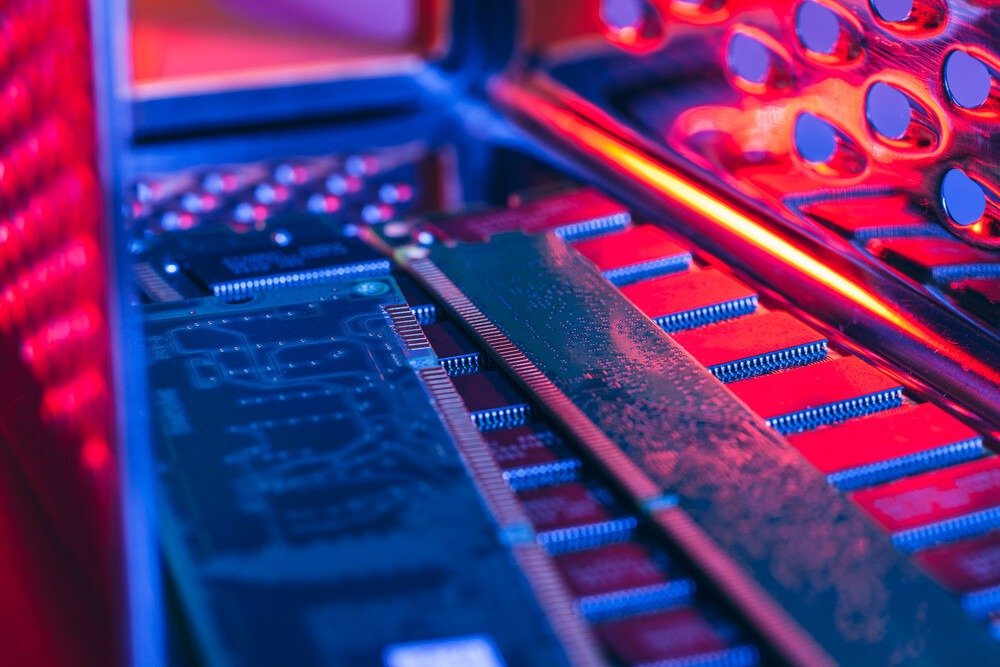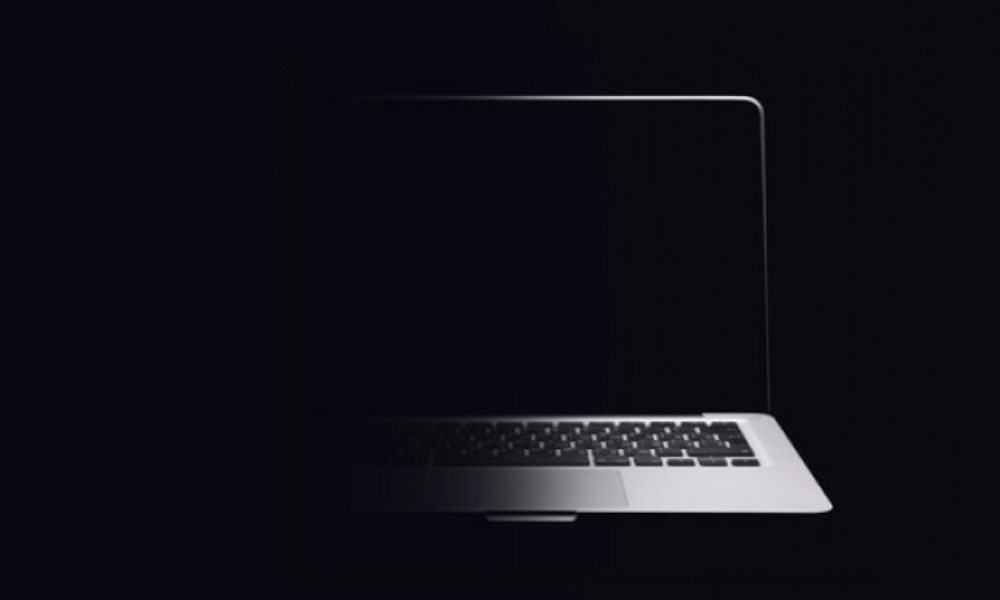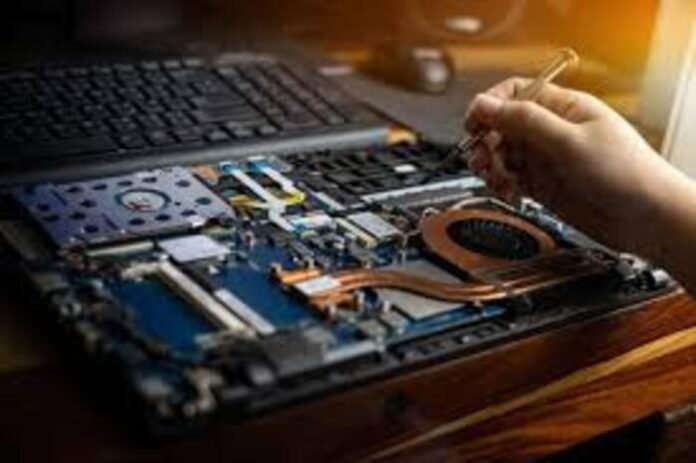The Apple ecosystem is renowned for its reliability and elegant design .
Yet even the most robust machines, like MacBooks or iMacs , aren't immune to hardware failure. A Mac that refuses to turn on, slows down inexplicably, or displays graphical artifacts can turn a productive day into a real frustration.
When faced with these symptoms, panic is often the first reaction. However, a methodical approach to diagnosis can save you valuable time and potentially prevent a costly repair.
In this article, I'll guide you step by step through diagnosing the 5 most common hardware failures on a MacBook or iMac, giving you tips for resolution or confirmation, and knowing when to call a Mac repair .
Why do a hardware diagnosis before repair?

Before replacing expensive parts, it is crucial to confirm that there is indeed a material defect, and to clearly identify which one.
Apple offers an integrated tool, Apple Diagnostics , to test several internal components (memory, graphics card, fans, etc.).
In many cases, the symptoms are distinct enough to point you to the correct component (drive, power supply , display, etc.). This avoids unnecessary replacements, unnecessary costs, and saves valuable time.
The 5 Most Common Hardware Failures — and How to Diagnose Them
Here are the five common types of hardware failures you encounter on MacBooks and iMacs—along with their typical symptoms, simple tests, and what to do next.
Good to know: If the symptoms persist despite your actions, or if the component to be replaced is integrated or inaccessible, it is time to turn to a specialized workshop. For a Mac repair , you can visit madmac-informatique.fr for a more in-depth diagnosis or replacement of defective components.
1. power supply / charging problem (battery, adapter, charging circuit)
Typical symptoms
- Mac won't turn on, or turns off immediately despite the adapter being plugged in
- MacBook says "Charging" briefly, then nothing
- The adapter light (MagSafe or USB-C) does not turn on
- The battery drains very quickly, even with little use.
Tests and diagnostics
- Check the adapter and cable: Test another adapter or cable to rule out an external fault.
- Inspect the connectors (MagSafe or USB-C): dirt, oxidation or damaged pins may block charging.
- Remove all external devices (drives, hubs, etc.) and reboot.
- Use Apple Diagnostics to see if a charging error code appears.
- Check the battery status in “About This Mac” → “System Report” → “ Power Supply ”.
What to do next
- If the adapter or cable is the problem, replace it.
- If the battery is defective (significantly reduced capacity, swelling, etc.), it will need to be replaced.
- If the internal charging circuit or motherboard is faulty, this will require professional intervention.
2. Disk or storage (SSD/disk) failure

Typical symptoms
- Very slow Mac, extremely long disk access times
- File system error messages, “volume corrupted”
- Gray screen, crash on startup, stuck on loading screen
- Mechanical noises (on models equipped with HDD)
Tests and diagnostics
- Launch Disk Utility to check/repair the disk (recovery mode or with an external disk).
- In Apple Diagnostics, you may see a storage-related error code.
- Run the
diskutil verifyVolume /in Terminal (recovery mode). - Use third-party tools like EtreCheck to detect signs of corruption or failing SSDs.
What to do next
- If the disk repair tool finds moderate errors, fix them and back up immediately.
- If the drive is physically damaged or the SSD has dead blocks, replace it.
- Restore your system after replacing the disk, and check for backups.
3. Problem with defective RAM or memory sticks

Typical symptoms
- Random crashes, kernel panics
- Application crashes, spontaneous restarts
- Mac restarts unexpectedly during heavy tasks (video editing, games, calculations)
- Extreme slowness on certain operations
Tests and diagnostics
- Run Apple Diagnostics — a memory error code may be reported.
- If your Mac allows you to remove RAM modules (some iMacs or older MacBook Pros), test each stick individually.
- Observe the system logs (via Console) for errors such as "memory error".
- If the Mac has the option, use a benchmark/stress test tool (memtest) from an external drive.
What to do next
- Replace the faulty strip.
- If the RAM is soldered or inaccessible (as is the case with certain recent models), you will need to go through a specialist service.
- Make sure you buy RAM that is compatible with your model.
4. Graphics card/GPU or video chip failure

Typical symptoms
- Visual artifacts, strange lines on the screen
- Black screen after startup (but the Mac appears to boot — you hear sounds)
- Restarts during heavy graphics actions
- iMacs with dedicated graphics: crashes, spots, or flickering
Tests and diagnostics
- Run Apple Diagnostics: Codes like VFD001 to VFD004 indicate display/GPU errors
- Test the external display: Connect an external monitor to see if the fault persists.
- Boot into safe mode or a lighter OS to isolate the fault.
- Look for crashes in the logs (Console) indicating GPU, drivers, or kernel panic.
What to do next
- If the graphics card is separate and removable (on some older iMacs), replace it.
- If the GPU is integrated or soldered to the logic board (as on many modern Macs), this is a more delicate repair—often replacing the logic board or GPU block—that a specialized workshop will have to handle.
- Back up your data immediately if any serious signs appear.
5. Screen / Panel / Display Logic Board Problem
Typical symptoms
- The screen remains black or displays a white screen, even if the Mac is turned on
- The image is partial, distorted, or displayed with lines (flickering)
- The screen works temporarily, then turns off
- On MacBook: Cracks, dead pixels, or missing backlighting
Tests and diagnostics
- Connect an external display: if the external display is correct, the problem is with the panel or the cable.
- Run Apple Diagnostics to detect a display or HDR defect.
- Check the internal connectors (video cable) if they are accessible (near the hinge).
- In some cases, a simple recalibration or reset of the video controller (via SMC/PRAM) can help.
What to do next
- Replace the entire panel or screen.
- If it is the video cable or internal connector, replace them or reconnect them properly.
- If the display logic board is faulty, it may require a motherboard or GPU replacement.
Good diagnostic practices and recommendations
Use built-in Apple tools
- Apple Diagnostics / Apple Hardware Test : This is the first tool to use to isolate faulty components.
- Safe Boot or Recovery Mode allows you to test your Mac outside of the user environment.
- Disk Utility , Terminal (diskutil) , Console : valuable for detecting disk, memory, or kernel log errors.
Save before any manipulation
Before opening your Mac or replacing components, make sure you have a complete backup (Time Machine, clone, external drive). This will prevent data loss in case of an error.
Proceed by elimination
Test one component at a time (RAM, adapter, cable, disk, etc.) to limit the area of investigation. Replace one part at a time and check if the symptom disappears.
Know the limits of your model
Some recent Macs have soldered components (RAM, storage, GPU), making some repairs impossible without replacing an entire motherboard. In this case, it's best to contact a professional.




